Lightweight or Heavyweight Bandsaw Part I
Owning more than one bandsaw is usually not an option for most woodworkers: they must decide one over all of the other options to make an economical choice in both costs and floorspace. In my bandsaw blog last week I tried to offer practical help for those in the market for buying one and to that end two or three months ago I ordered one of the least expensive 10″ lightweight models I could find but one with what seemed like a good reputation. On the larger models I showed some proof positive that many models throughout the world are as near identical to one another that we can naturally assume that they come out of the same Asian factory and no doubt this has happened to almost all models available including the small models also. In most cases, of over 190 countries in the world, the chances are if you buy a new or newish bandsaw it will have been made in China or Taiwan even if it carries a well-famed domestic named brand according to the country you or I live in or are familiar with. There is no loyalty with brand owners and distributor sales outlets. Companies buy and sell one another like changing their socks or shirt. In light of this reality, we the consumer must either buy secondhand machines (and most other woodworking tools and equipment) or buy new knowing that we now have no true competitive market even if we think we do.
My smallest bandsaw is lightweight. With a bearhug I can lift and swing it to where I want without a problem. For safety’s sake you must decide this for yourself based on your strength, height and weight as well as your manipulative body dexterity. It is however best to think about a mobile base because in tight spaces you want to move it in and out of action without exerting undue pressures on the points that matter. If a machine is to retain its accuracy and precision it must be handled with care.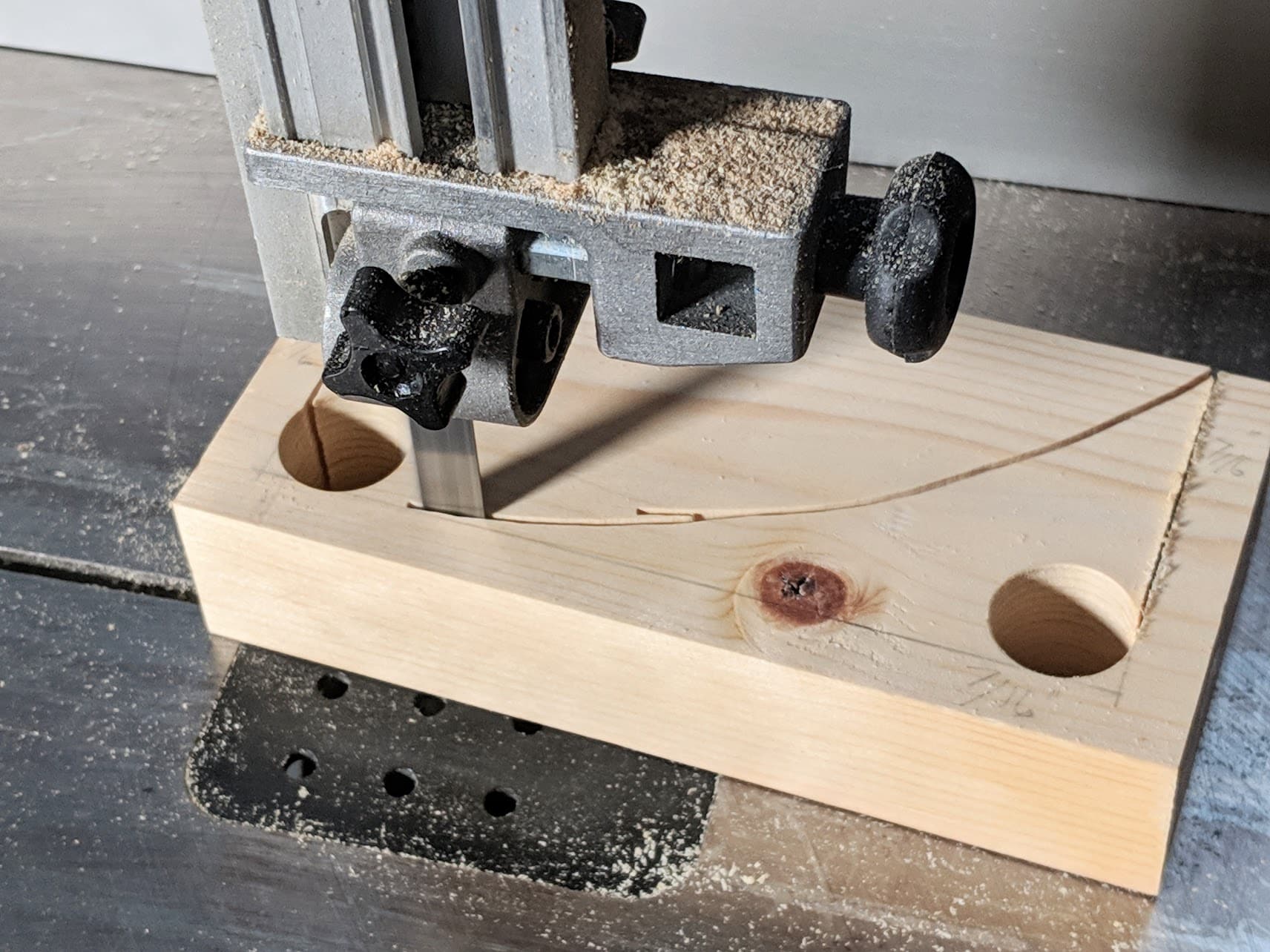
I was very surprised with my small machine. It arrived sensibly packaged in a rectangular cardboard box and stood with the courier on end outside my front door. An hour or so later I had it assembled and was cutting my wood. Whereas the machine is made mostly of lightweight parts, it comes with a cast iron table and once everything is cinched down and tightened up I felt enamoured by its compactness. The first pine piece slipped into the cut just fine. Some flex in the lateral aligning made me add more tension with a quick half turn of the tensioner. Problem solved. Now I know this is what would be referred to as a hobby level machine. I understand that, but most woodworkers today are hobbyists and they outnumber the so-called professionals thousands to one. This is not a machine made for heavy commercial use but I found that with precise set up I could cut through anything a hobbyist might need to cut through including a 6″ section of oak I wanted splitting in two for a book-matched panel.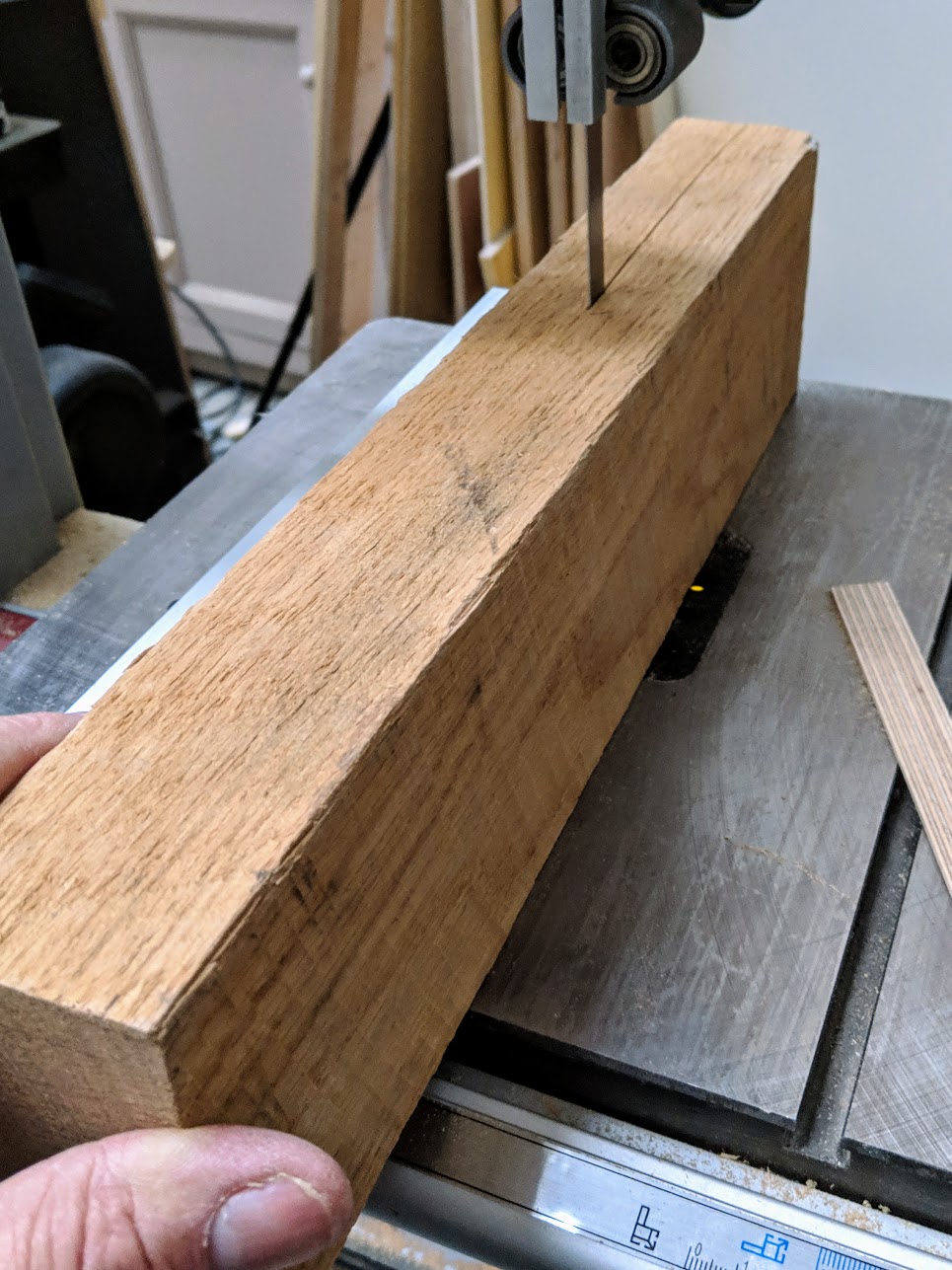
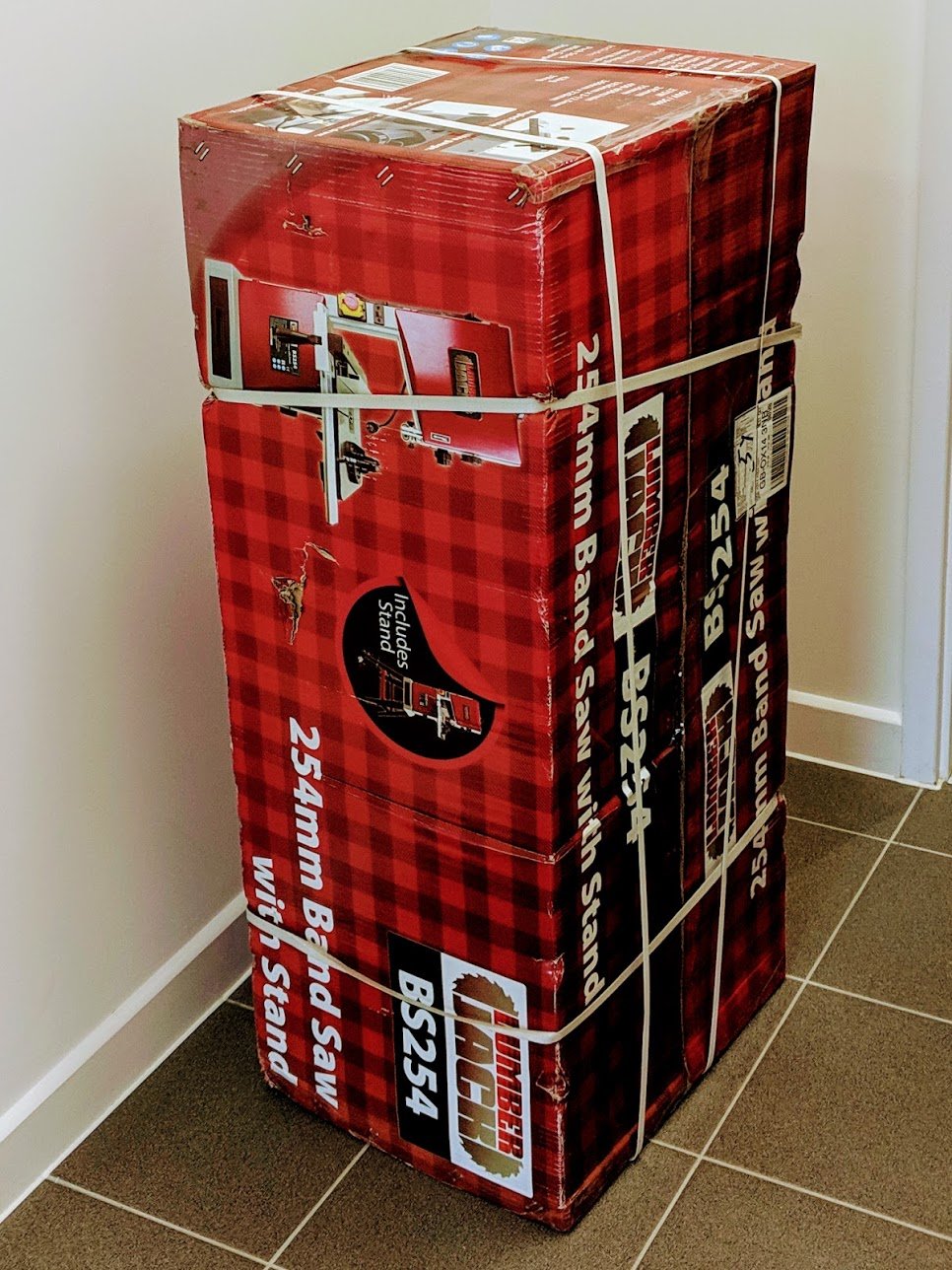
Most amateur woodworkers need to resize sections by ripcutting or crosscutting and most woodworkers buy a bandsaw with curved cuts in mind. In reality they think less about straight cutting yet for the main part straight cutting far surpasses the need for curves-possibly a thousand to one. With any bandsaw top performance revolves mainly around the blades. In my mind `i wish I had the equipment to sharpen the hardened teeth and keep a blade going longer than its single life use. Truth is, as with many machines, the speed of the blade means it actually makes a million more actual cuts per teeth than is really needed. Were it not for the hardening of the teeth the teeth would be dull in a matter of minutes rather than a few hours. So we live with hardened teeth for longevity and the premium cuts we need. Another issue is that steel bands rotating at consistently high speeds and under high tension begins to fatigue. In many cases, especially on small or short bands, the steel may not hold up or hold an edge near as long as with the first sharpening. In this case the blade will usually snap, mostly at the weld where the weld itself, because of the welded steel and the difference in the juncture of the steel band, will give In materials science, fatigue is the weakening of steel caused by the pressure of continuously applied loads.This progressive and localised area results in structural damage that occurs when a material is subjected to cyclic loading as with and especially with the bandsaw. 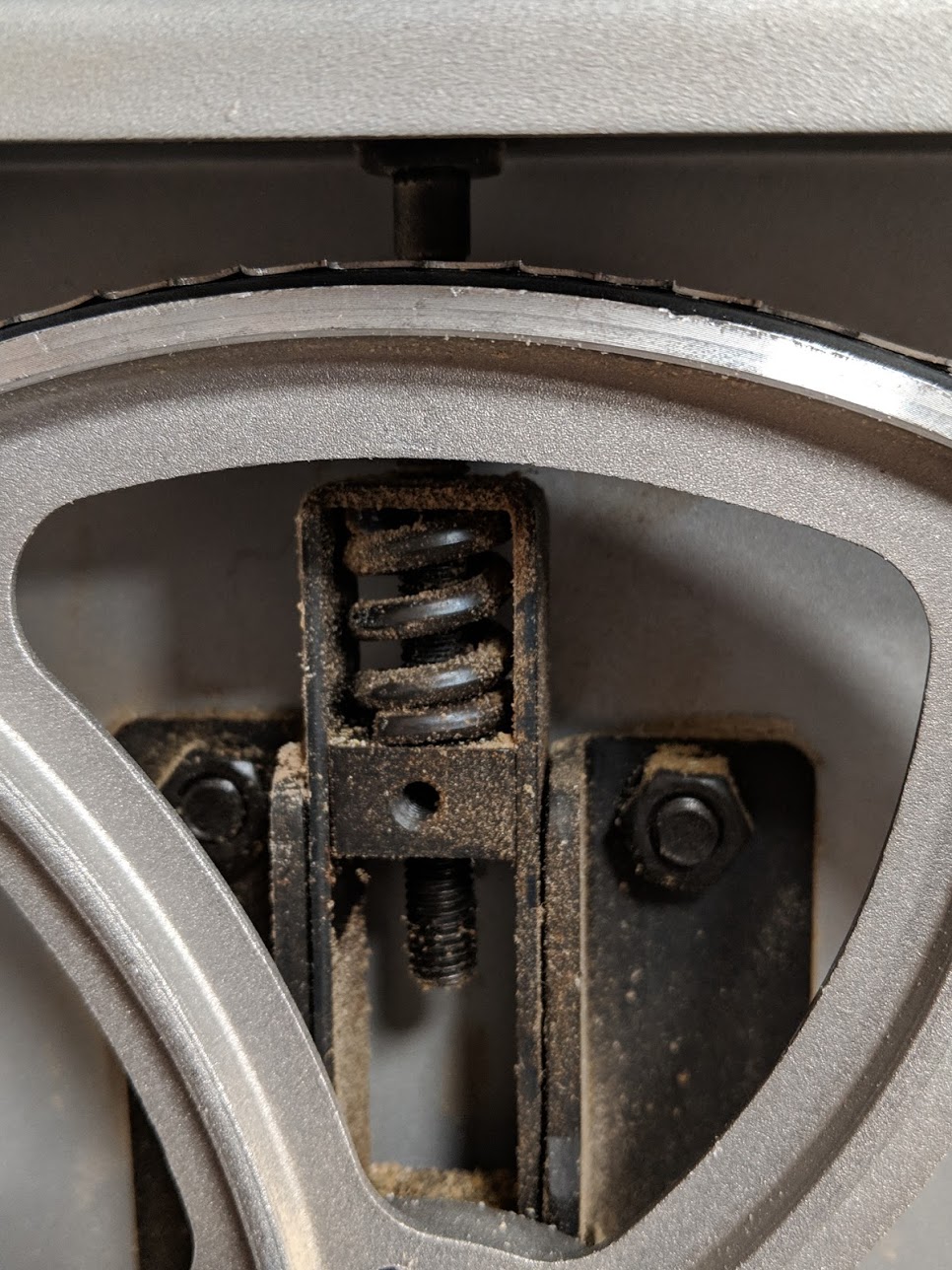
I was surprised by the way my bandsaw performed. Yes, I would like a bigger motor. Not much bigger. I found the machine easy to set and tension and TuffSaws supplies the right thickness of blade so that they tension just right. I ripped through laminated stock 3 3/4″ thick in birch and oak without any issues. Take it slow and steady. I realised that the lightweight wheels are lightweight alloy and not heavy cast metal because the added weight would require a larger motor. In this case it is well balanced between wheel weight and motor. I recall in the past when earlier models came out they used light alloy wheels that worked just fine. These do too. Often issues arise around fastenings and part holders, especially when made for lightweight pot alloys. Pot metal is an alloy mix made from low-melting point metals that manufacturers use to make inexpensive castings. Sometimes, more often than should be, the alloys set with undetected air bubbles and pockets within the casting and this results in a weak component. Done properly, perhaps using centrifugal casting techniques where the diverse forces of centripetal acceleration distributes the molten material throughout the whole mould and all air is expelled by the force, you end up with a solid casting. So in purchasing a lesser machine all of this should be taken into consideration.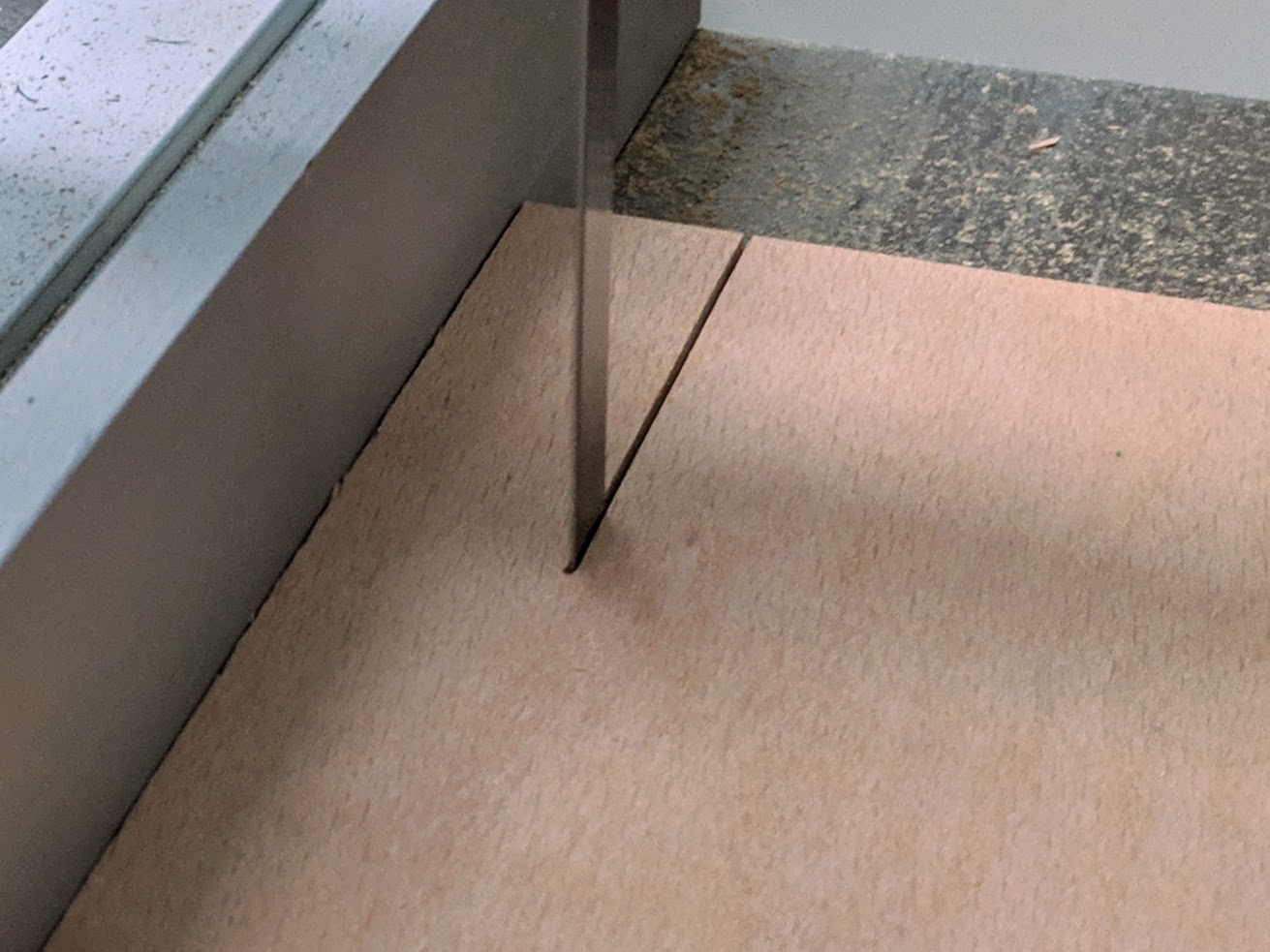
For the main part I might say best to use the small bandsaw for small work. A new blade will resaw the 3/8″ box sides you want and split 1″ stock for book-matched tops and bottoms without an issue. You could take 1by 8″ stock and cut two 3 1/2″ table aprons to width or cut 2″ tapered or curved legs with no problem at all. I recently ripped a few hundred linear feet of 3/4″ plywood without drift and very quickly. As fast as I would on my larger bandsaws. I didn’t find any problematic vibration in the body of the bandsaw nor in the blade as it worked the wood. For radius work, with a small 1/4″ blade, I could cut turning blanks quite readily. I am sure it would balk in large and heavy or hard stock but I generally don’t do that. Let me think! Of all our recent masterclass projects, going back to the workbench at the beginning of 2018, there was not one of these projects that I could not use this 10″ bandsaw for more than adequately. That should tell you lots.
My oak baby cot
My oak Eco waste bin
My pine and my hardwood blanket chests
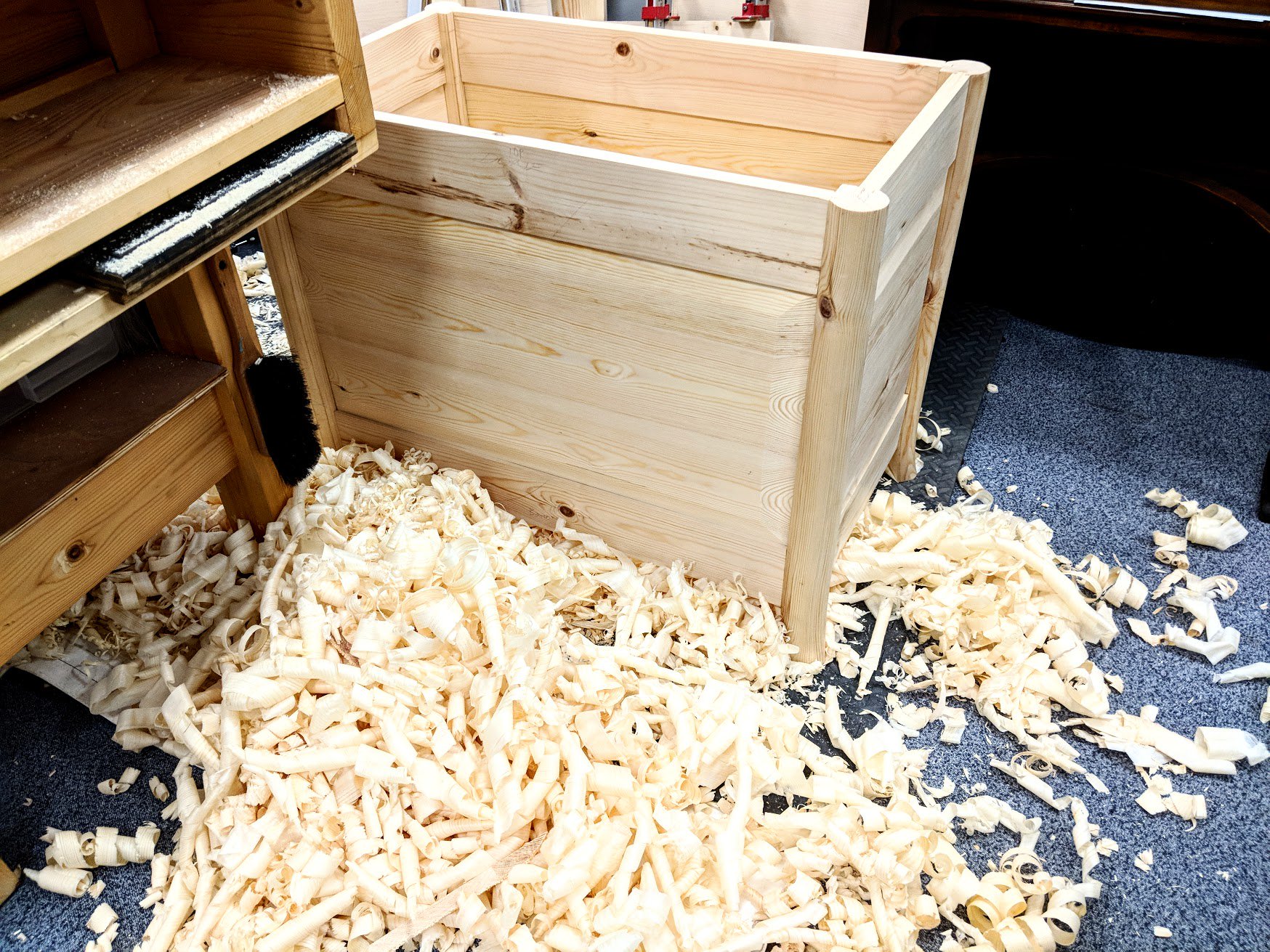
My stock of hardwoods, all of this can all be reduced in size on a small bandsaw
My what a gathering and that is far from all. So the choice is yours. if a bandsaw has a year or two’s worth of warranty chances are it will pay for itself in time saving without invading your hand tool work too much at all and if something does go wrong you can return the whole machine at the suppliers cost.
In conclusion I would say that the lightweightness of the machine tells you not to think you can push beams and larger logs into the machine. You cannot do this safely. There is a good chance you will overturn the machine or damage it or the material or indeed yourself. Stay with the small stuff and you will save a lot of hand sawing to dimension your wood.


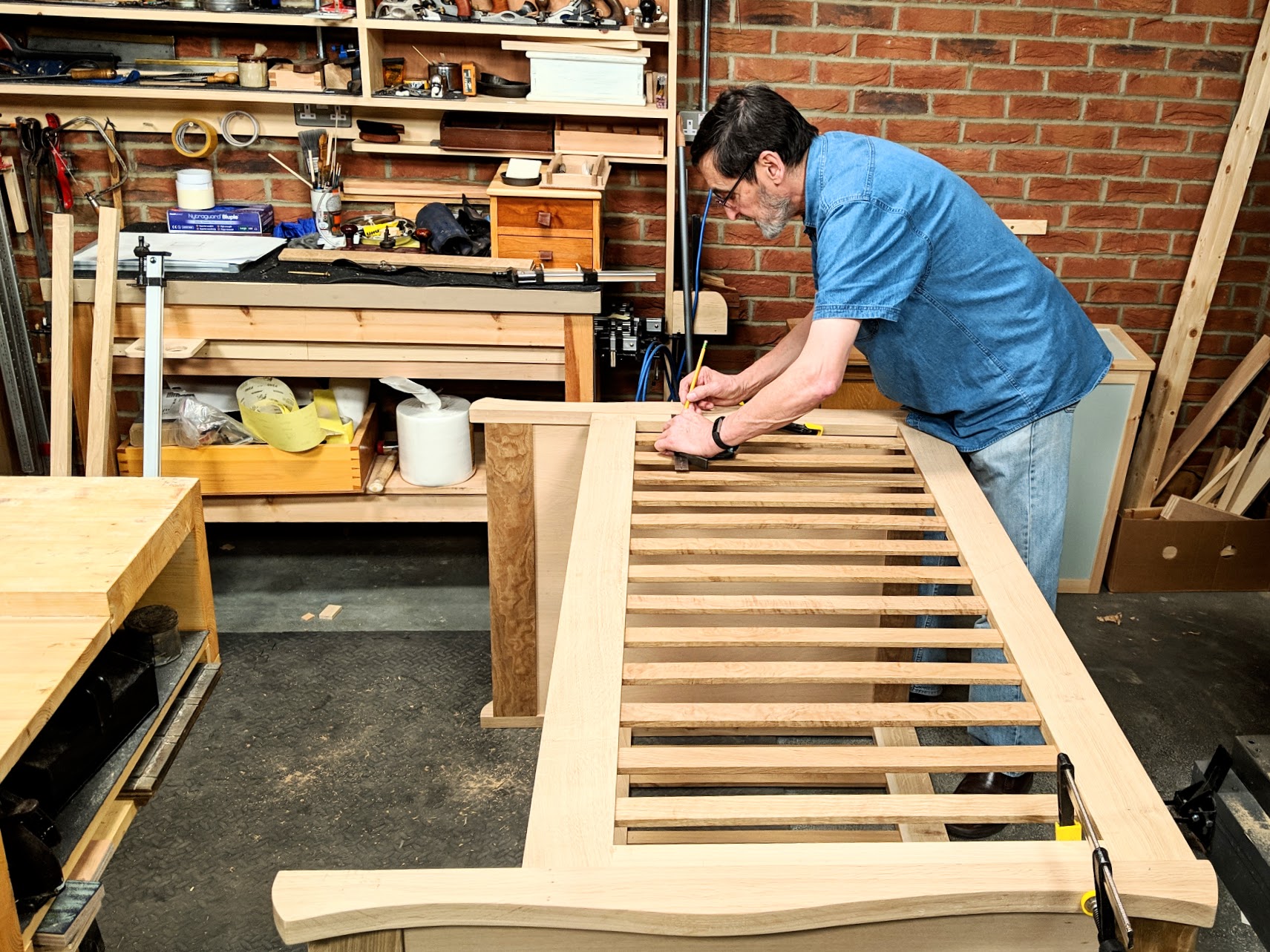

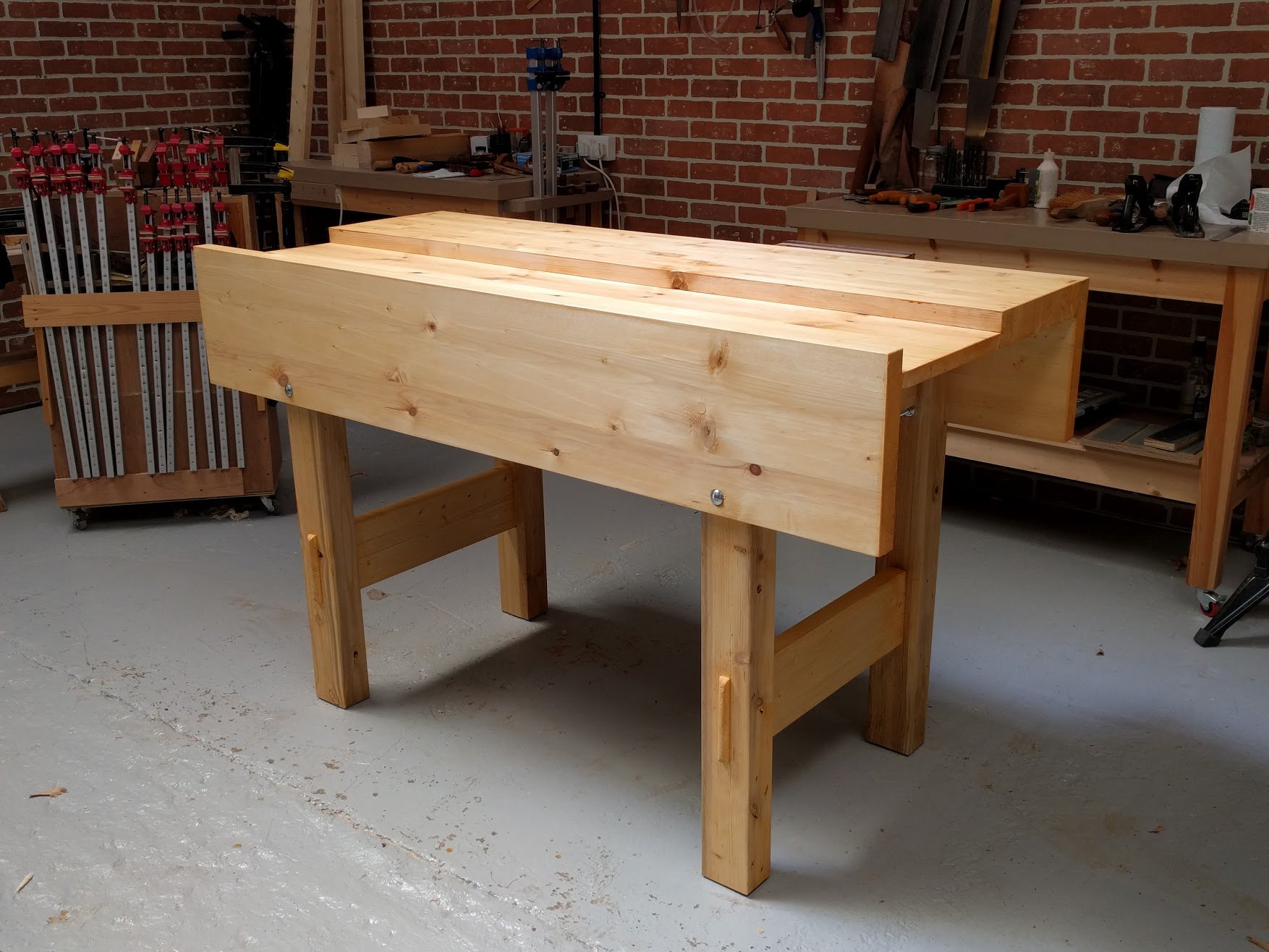
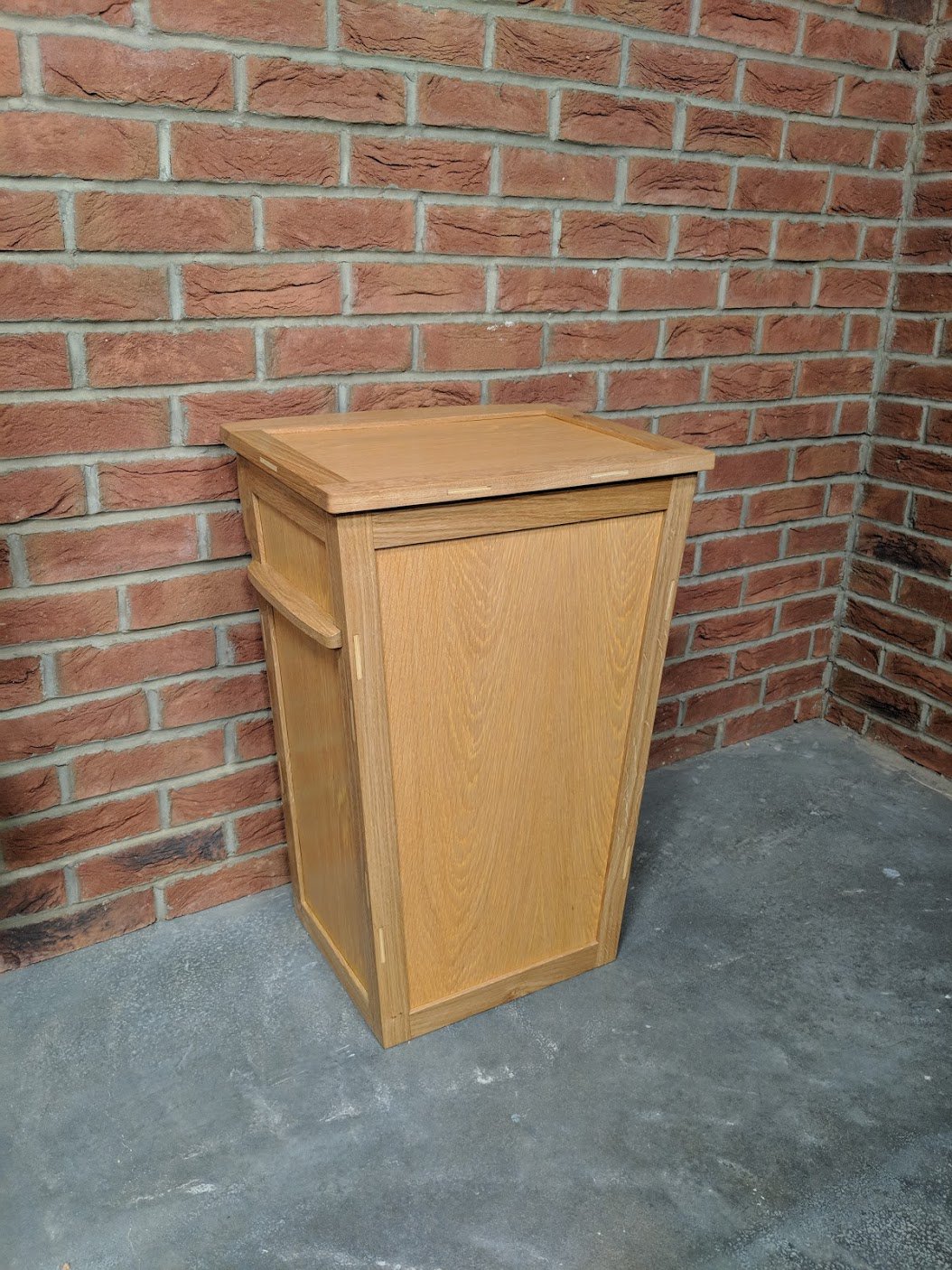
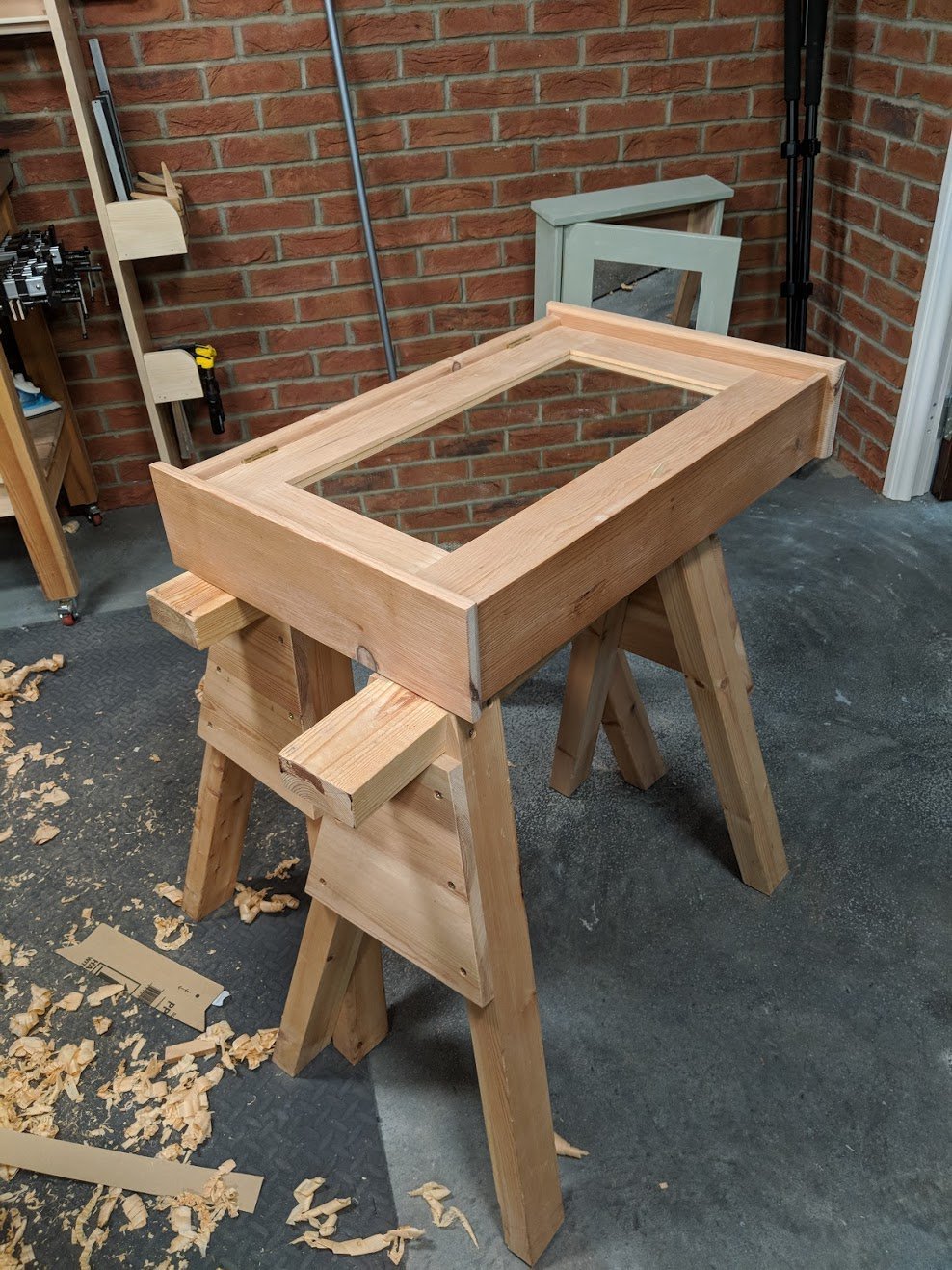
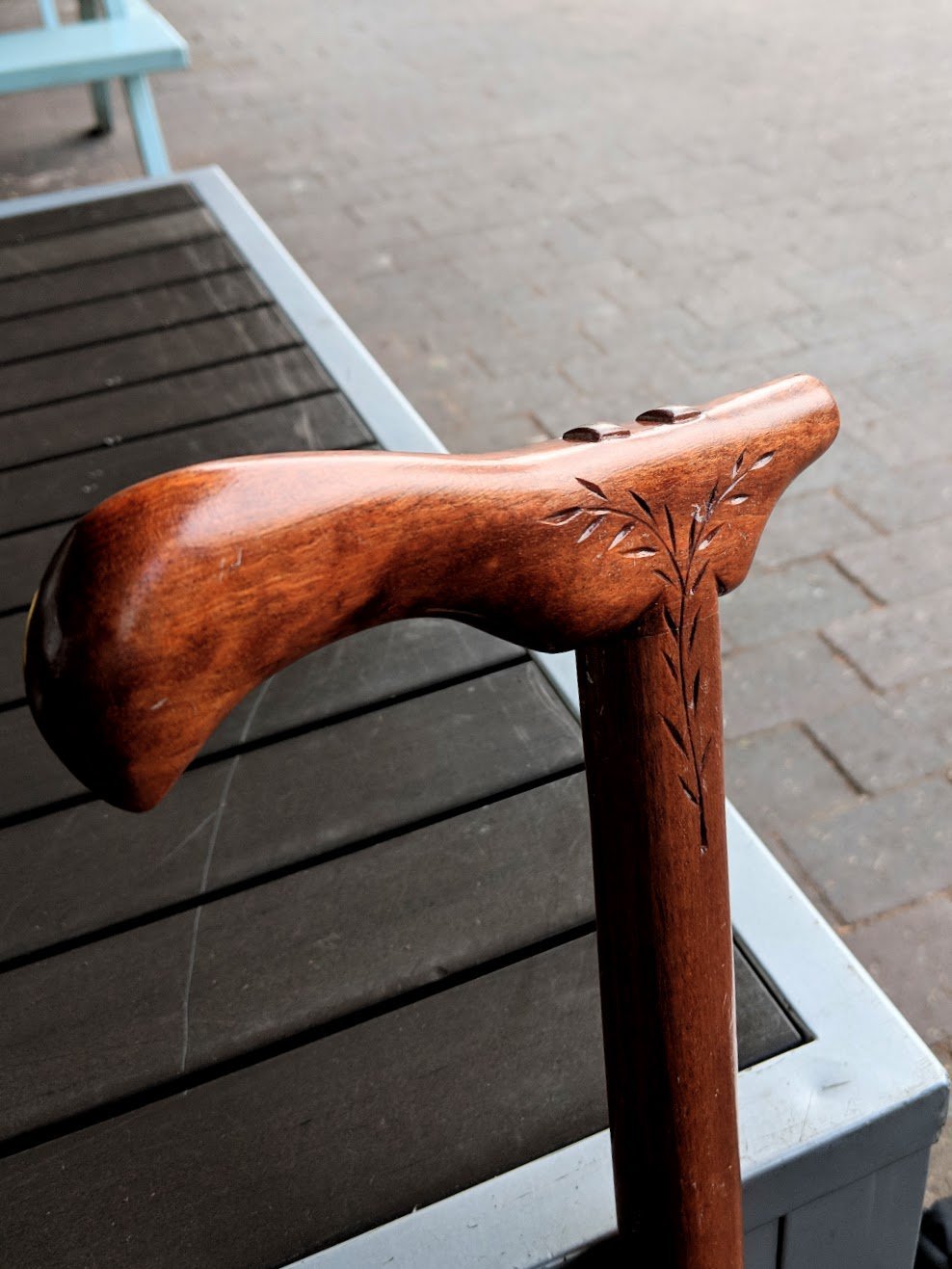
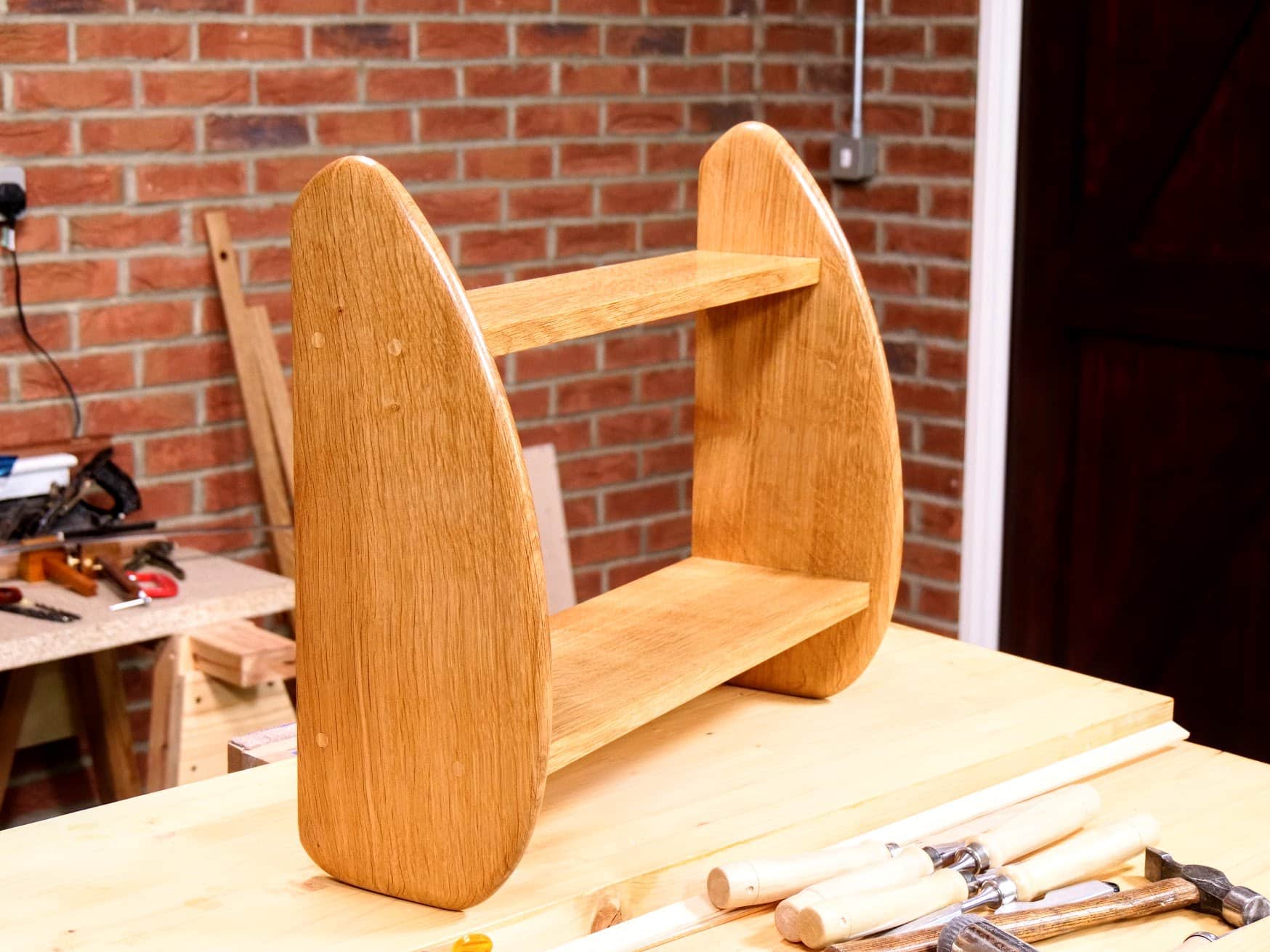
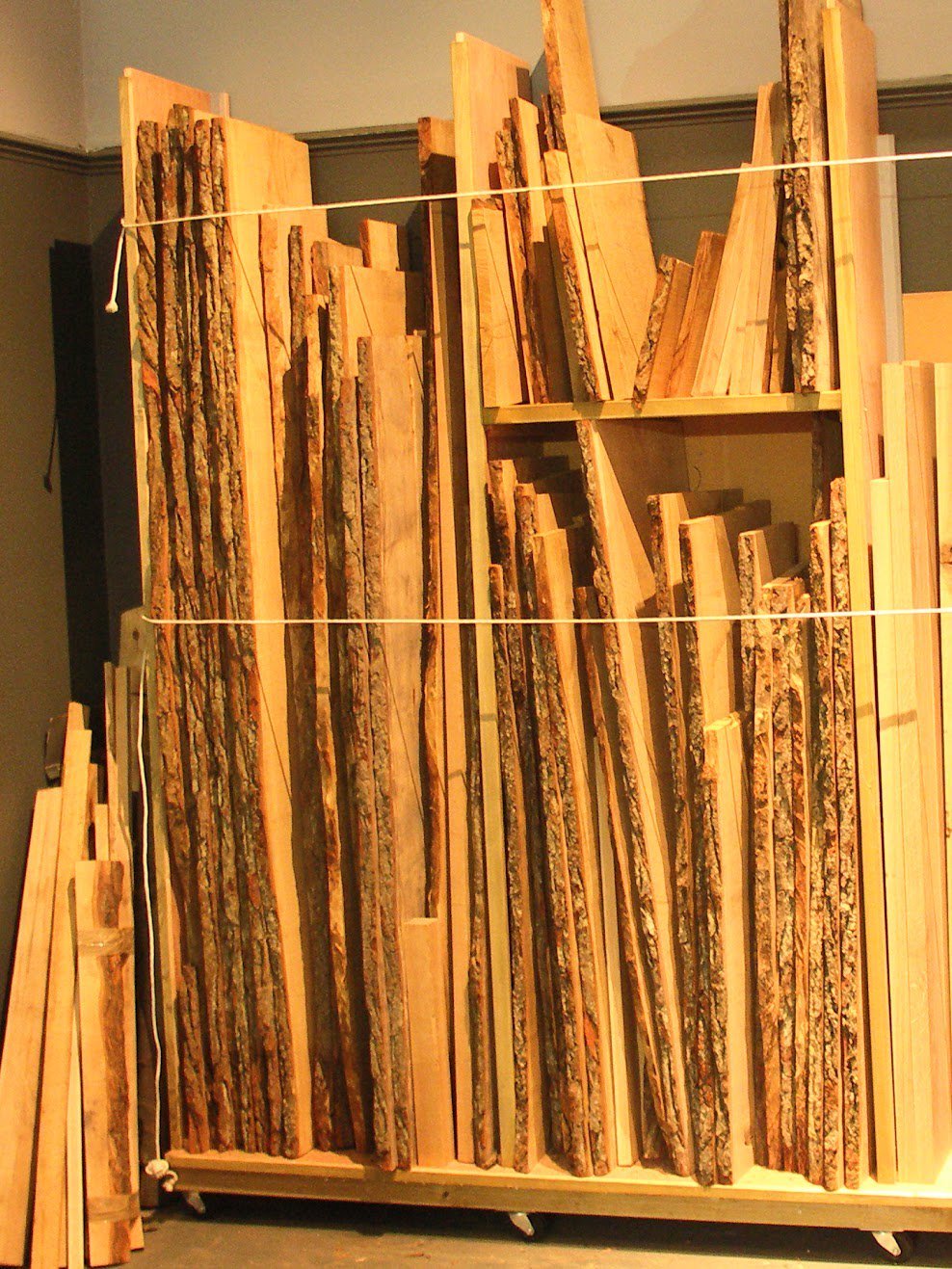
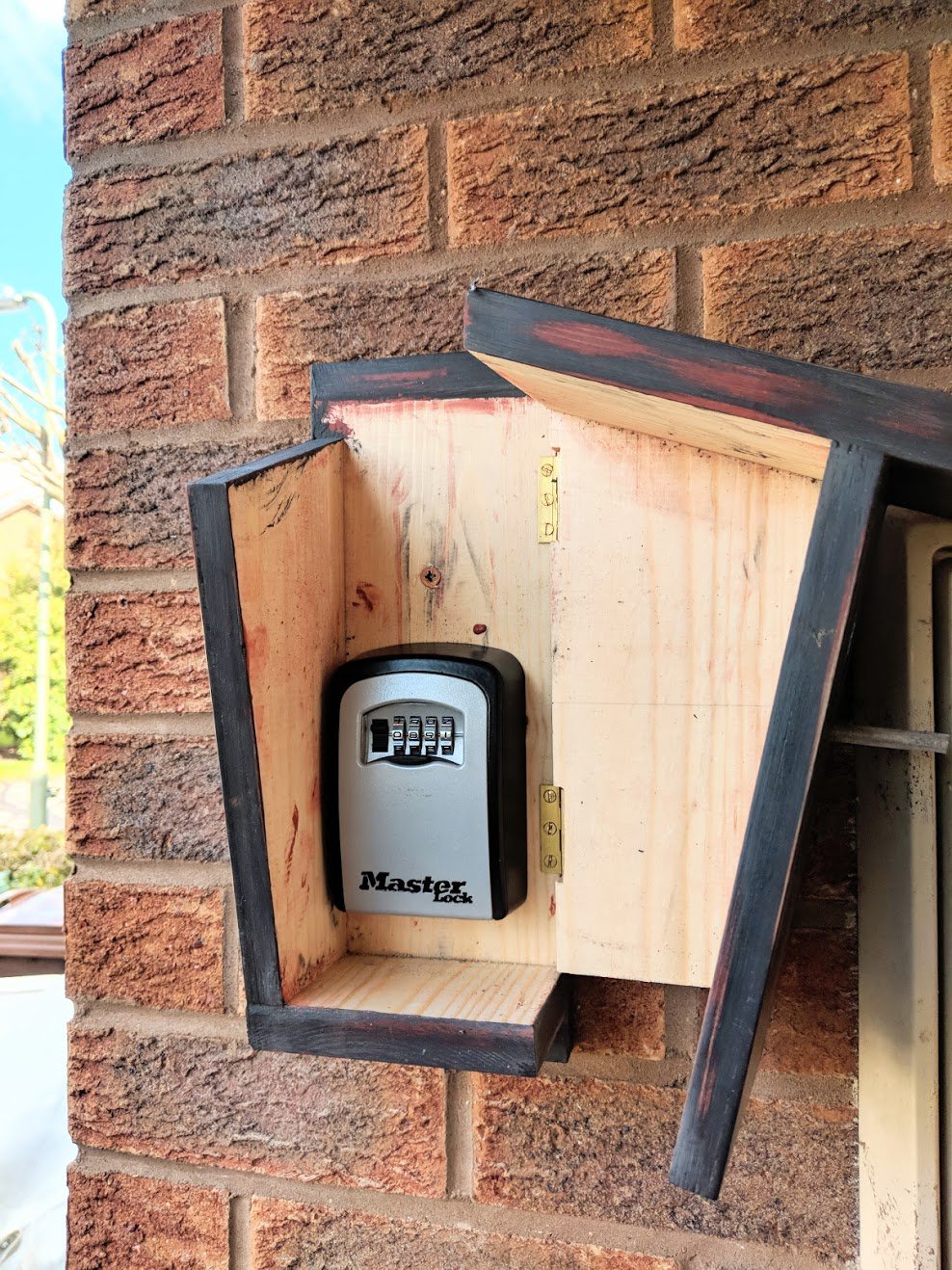

Hi Paul
Having read your recent blogs regarding small bandsaws I have purchased the same brand as you albeit the 12” model. I’m now looking to upgrade the bandsaw blade and would appreciate your advice. Looking on the TuffSaws website I see they offer a range of blades – Hobby / SuperTuff Carbon / SuperTuff Premium and so on. Which would you recommend for a 1/2” wide blade and also what tpi? I’m looking mainly to cut stock to width and length rather than ripping to reduce thickness.
Many thanks
Ian
Paul,
Well said and written!! Amazing amount of information there. I read the article, and what it did for me is exactly what I think you were trying to do for us readers.
It gave me the confidence that if I did just get something (a bandsaw) that was lesser quality and size than say a $3,000 Grizzly band saw, it will work. AND more importantly there are machines out there that will work well, depending on how hard you push/treat them.
Your in-depth knowledge of mechanics and understanding of manufacturing is admirable. I come from a small town like you that was once an industrial economic place of innovation and great influence in the United States. Many great things were made from the steel once manufactured in the town I grew up in. I have a fond appreciation for metal (and wood).
Thanks for the article it was enlightening to something I otherwise would have not pulled the trigger on and just procrastinated on because I either couldn’t afford it or fit it in my shop!!
I bought a cheap used 9″ band saw, and was not expecting much. But it’s better than expected. But it’s not for much heavy work. I use it often for very small cuts that are teadius for hand cutting. But I miss my heavy saws, left behind, when moving from Alaska to Kentucky.
I bought a Record bandsaw about eight years ago , the little 250 model ,it will cut 4 1/4” deep by about 10 1/2” wide. After setting up it has done every single thing I have asked of it from cutting roof fascia finials to bowl blanks, this thing is not a toy ! However to my point, I would love a bigger bandsaw and my budget would go that far. But, how often would I need that extra capacity? and with the extra capacity the extra space I would need to house it ? So, having thought about it,I’m going to stick with what I have, with a little ingenuity it will do what I need.
The trouble with much of modern equipment is that it is now a ‘commodity’, where the item is the ‘raw material’ to be badged and tweaked by the supplier. This leads us to say that we prefer the saw from White which is much better than the one from Black and we pay a premium. But in reality we are only paying for the name, although there maybe a bit more quality control, but it is essentially the same item.
The other downside to modern equipment is the difficulty in repairing it. If your washing machine goes wrong a new circuit board will cost you £50 plus another £50 for labour. Whereas a 50p condenser just needs to be replaced. But the ‘engineer’ does not have the skills to do the repair. Over the years I have rebuilt car engines and the little engines on lawnmowers etc. If I look under the hood of my car there looks to be very little that I can actually fix myself. No distributor, HT leads and the variable valve gear is beyond me. Maybe my next car will be a classic that I can tinker with without needing a computer to adjust the timing.
I have been procrastinating on buying a small bandsaw for about 4 months (as it is quite an investment for a hobby) – and was ready to get the Record Power one, which had some excellent reviews for this type of machine, but since Paul’s blog post a few weeks back I took a look at the Lumberjack (which I had not previously heard of).
There are a lot of similarities (as Paul explained – most likely manufactured in the same factory) – but the Lumberjack does have 2 speeds, and a slightly larger table compared to the Record Power one. Still not sure why I would need a slower speed (one of the many things to learn) – but better to have an option, even if rarely needed.
Another problem I have is that living in France there are not so many (or even the same) options, and things are often more expensive here…. But the team from Lumberjack will ship to me a reasonable price – so I bit the bullet and ordered one last week (as well as an dust extraction system … which I will now need). It should all be arriving Wednesday.
Today’s post has given me the confidence that I made the correct decision to get a small machine, as I will not be resizing thick stock, and this will help me get the best use of a great pile of cherry wood that I have waiting for projects. The bandsaw should allow me to more quickly and accurately size the timber I have, and get on with the fun stuff.
I hope the guys at Lumberjack have a lot of stock – I am sure they are going to be in high demand.
The slower speed is for when you want to cut metal, Mark. I often cut alluminium on a bandsaw using a small toothed wood blade but some harder metals need the slower speed and a metal cutting bandsaw blade.
Thanks Paul, for your incite. I’m retired, originally working as a printer, then having a woodworking business. I would make a cut list, cross cut the random length and width boards to a heavy length, Join, square, plane, then cut to width on the band saw. I loved my 10″ band saw, and clearly processed almost all my wood with four tools. 10″ radial arm saw(Sears), 12″ joiner( from the forties), 12″ planer(Shop Smith), and a 10″ band saw(Inca). I can’t remember ever going beyond the limits of my machines. Those tools were the heart of my shop. Each tool had a function. I never tried to use my radial arm saw to rip or drill,for example, just cross cut. Each tool had a strength were they shine. The band saw was used for ripping 99% of the time, just as you said. I’m all in for band saw ripping. Truth in band saw use. You have me as a follower.
I’ve considered adding a second bandsaw to complete the 1940s era 14″ Delta – Milwaukee, but I’ve thought that blade flexure fatigue from running over small wheels would lead to breakage much sooner. Perhaps the metallurgy of modern blades has overcome that problem.
That said, a discussion of blade tooth styles, widths, and TPI would be very useful. Many new users attempt to use blades that are wider than their saws can bear. Although my old Delta is a sturdy machine, I’ve never run a blade wider than 1/2″, although I suppose that it could manage a 3/4″. The best cutting blade I’ve ever used is a carbide-toothed 3-4 TPI with a thick 3/8″ wide band. It will resaw through 12″ of hardwood with ease. Unfortunately, the 14″ wheels are apparently too small, and so breakage has been an issue, and I’ve take it to professional blade shop several times for rewelding. I’ve been advised that it can not be welded again.
erratum: ….”to complement the 1940s era…”
I have a new 9″ benchtop bandsaw coming tomorrow. I’m quite limited on space so I need to be able to stow it away when not in use. Plus, I was able to purchase it through my credit card rewards program so, it didn’t cost me anything. Free is always good! 🙂
“It is however best to think about a mobile base because …”
So far as I see that isn’t offered by this particular manufacturer SO I’m hoping this might be:
a) something you made or contemplated making.
b) the subject of a forthcoming post or video 🙂
On a related theme, for occasional (hobbyist) use I wonder if it might be a realistic option to just move the thing outdoors to use it to avoid needing dust extraction ?
Running the saw outdoors is fine, but do note that bandsaws will generally tend to fill the bottom of the cabinet with dust if run without extraction. An occasional vacuum or brush out will fix that.
My wife purchased me a band-saw for a Christmas present. I gleefully assembled it thinking I would make or purchase a dolly for it later. That was a mistake, I wish I would’ve built the dolly then assembled it. Now I look at it daily dreading the disassembly just to put it on wheels.
I’d like a bandsaw more tailored for resawing. I don’t mind ripping 1″ boards to width by hand or croscutting any thickness. And the few curves I cut are done with a coping saw. But splitting a 1″x8″ board into two thinner boards by hand for bookmatching takes a long time and I often get off course and ruin both halves.
Industrial resaw bandsaws have bigger motors to power through the thicker cuts. Hobby grade bandsaws have 1/2 hp or 1/3 hp motors and run at high blade speeds. Hobby bandsaws don’t have the power to make thick cuts, so you end up with high blade speed and slow cuts, dulling the blade and burning the wood. I wish for something with a slower blade speed, even if it has a small motor. Like a hobby bandsaw with a worm gear drive instead of a belt and pulleys. It would be slower at resawing than an industrial grade bandsaw, but still much faster than doing it by hand, and better than the commodity hobby bandsaws on the market.
Here again I see the usual problem: most people cannot entertain the “industrial resaw”. And not all “hobby bandsaws” do run at “high blade speeds” at all. The one I show has two blade speeds with a two step pulley system and a drive belt. As I said in my article here, the blade cuts readily through thick stock as long as my blade is sharp and I take my time. The blade so far has lasted exceptionally well. After a month I can easily rip 4 1/2″ oak through for book-matching.
In an ideal world with bags of space to work in and the money and all other things, we would all have a larger machine with a more powerful motor, that doesn’t really need saying because it is so obvious. As for the “burning of wood”, that doesn’t happen either unless the blade is super dull and that is pure neglect on the part of the user/owner.
As always Paul, thanks are in order. I bought an inexpensive 10″ bandsaw at Sears years ago and it has served me well. I knew going in that it wasn’t the “queen of the fleet” and I keep that in mind. If it fails I may buy a little better and a little bigger one.
Hi Paul,
I’ve just started wood working as a hobby and I just purchased a small band saw approx same size as your one. I’ve never used one before. I find when I am pushing the wood through to cut, it begins to wonder of. Is it something I’m doing to cause the problem. it doesn’t happen all the time, just some times. the material I’ve been cutting is Ash and Oak.
Hi Paul, having just purchased and set up the same Lumberjack bandsaw, I find the front face of the aluminium upper guide rail really obstructs the view of the cutting surface. Your Startrite bandsaw with its clear plastic guard (and other models with no guard) acknowledges this issue. Any thoughts on how to address this poor view?
I’ve opted for a Rikon Deluxe 10-inch bandsaw due to its size, capacity and the occasional use it will get. I’m designing a mobile stand for it but I’m having difficulty deciding what table height will be optimum. Any guidelines for a decision would be appreciated.
If you read this, Paul, thanks for your great woodworking sites and instruction.
I have mine the same height as my workbench at 38″and it works perfectly for me. Ad or subtract inches as appropriate and try it on boards to see how a height feels for you, but make certain it is steady..